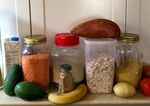Why we need to talk about the link between being above a healthy weight and cancer
by Guest Author,
- November 30, 2018
- Leave a comment
We now know obesity is a preventable risk factor for 13 types of cancer[1]; however awareness of the link between obesity and cancer remains low among Australians[2] [3]. As a General Practice Registrar that sees patients on a daily basis who struggle with maintaining a healthy weight, the importance of raising awareness as well as providing practical strategies cannot be ignored.
I was proud to be involved in the launch of Cancer Council Victoria’s campaign that aims to help educate Victorians about the link between weight gain and certain cancers as well as encourage them to take steps to reduce their risk.
Featuring Melbourne surgeon Dr Ahmad Aly, the TV advertisement exposes what sugary drinks could be doing to our health as a laparoscopic camera delves inside a patient’s body exposing the dangerous toxic fat around internal organs.

There is evidence that a high intake of excess added sugar can contribute to unhealthy weight gain and obesity. The most significant contributor of added sugar in the Australian diet comes from sugary drinks. For example, a can of cola can contain up to 10 teaspoons of sugar which is frightening in itself when we know the World Health Organisation recommends no more than 7 teaspoons of added sugar a day. That’s why the campaign focused on encouraging Victorians to reduce, or even eliminate, their consumption of sugary drinks.
Although the campaign has concluded, we must not let the conversation end there. General Practitioners are well placed to provide reliable preventative health advice and strategies. It is therefore crucial that we sensitively initiate discussions with patients about the risks involved with being above a healthy weight as well as what can be done.
Here’s what GPs can do to help
General Practitioners play a valuable role in helping patients achieve a healthy weight and preventing obesity-related conditions. A recent LiveLighter survey[4] of more than 1000 Australians aged 18-64 revealed on average, more than a third of Victorians (36%) reported turning to their GP for health and nutrition advice.
Since its launch the campaign has generated feedback and prompted questions from people interested to learn more about the science behind the link, as well as their own cancer risk.
Use these key points to navigate a discussion on the link between obesity and cancer with your patients
- Being overweight or obese increases your risk of 13 types of cancer.
- Visceral fat around our waist and organs is dangerous and can increase your risk of some cancers and other chronic diseases.
- Excess body fat, especially excess “visceral fat” that is out of sight but sits around our organs, doesn’t just sit there and store energy. The fat is active and it produces chemicals and hormones which travel around our bodies and can lead to serious health problems.
My strategies you can implement straight away
- Actively initiate the conversation about nutrition, exercise and weight management with patients and raise awareness of any risks associated with an unhealthy lifestyle.
- Work closely with your patient to determine a problem area and then work towards developing a small, achievable and sustainable preventative health strategy, such as “one less sugary drink a day”, that can improve their health in the long term.







